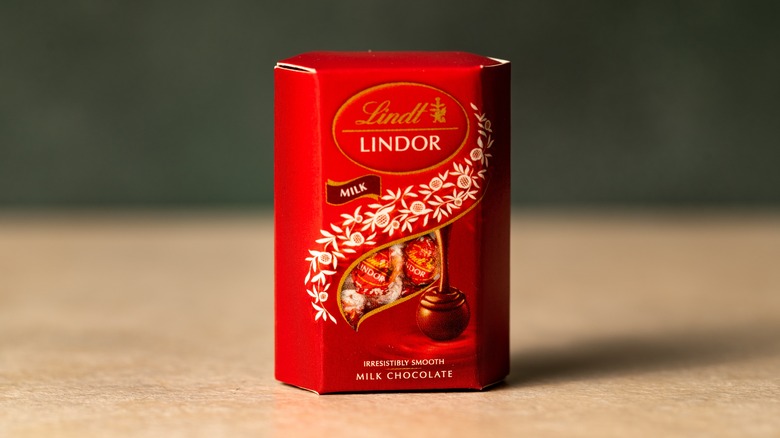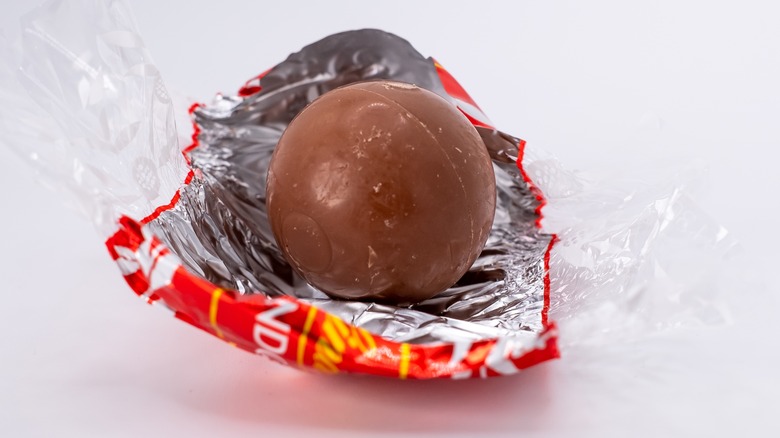How Lindt's Lindor Chocolate Got Its Name
When the famous Swiss chocolate company was originally founded in Zurich, Switzerland in 1845, its specialty chocolate confectionery shop employed a modest 10 people. Over 175 years later, the Lindt company has grown rather spectacularly to more than 14,000 employees with nearly $5 billion dollars in annual sales, according to Statista. Much happened in the intervening years. In fact, when the first storefront opened on Marktgasse in the old town section of Zurich, there was no Lindt attached to the name. Rather, it was Rudolf Sprüngli-Ammann and his father David Sprüngli who started the chocolate making tradition, opening their first factory only two years after the confectionery debuted, per Lindt.
Bern native Rodolphe Lindt entered the picture in 1879 after he accidentally discovered a process called conching that turned stiff, easily breakable chocolate into buttery smooth fondant. The two chocolate makers eventually merged in 1899, becoming Lindt and Sprüngli. The company continued to grow during the First World War, expanding sales to more than 20 countries by 1915, notes Culture Trip. More remarkable growth occured during the decade that followed, as Lindt and Sprüngli expanded operations to the U.S., and to major European markets such as Germany and the U.K., becoming a truly international enterprise in the process (via Lindt). By 1950, the company had also introduced what would become one of its most enduringly popular offerings, Lindor chocolate.
A legendary chocolate brand is born
The recipe for the first Lindor chocolate was finalized in 1949, according to Lindt. So too was the Lindor name, a portmanteau which combines the surname Lindt with a French word synonymous with luxury. French for gold, the word "or" was chosen to symbolize the exceptional richness of the new chocolate bar. "The flavor of all our chocolate — including Lindor — shines when the chocolate is at room temperature. It melts delicately and provides a rich feel to the mouth," notes one of the company's master chocolatiers.
When the Lindor name was first unveiled in 1949, it was in service of a chocolate bar, not a truffle. Lindt did not premiere its iconic chocolate truffles until 1969, and then only as a seasonal Christmas offering. However, the truffles, with their smooth chocolate shells and satisfying fillings soon became a standard item, and by 1984 they were available in milk, white, dark, and hazelnut flavors. Nowadays, of course, that range is much expanded, and chocolate lovers can purchase the truffles with up to 45 different fillings and flavors.
The French word for gold appended to produce the Lindor name, was the first, but definitely not the last luxurious accent to embellish the product's packaging. The company added Switzerland's famed St. Gallen lace pattern to Lindor chocolate bar boxes in 1962, a tradition which is continued on the brand's chocolate truffle packaging even today.

